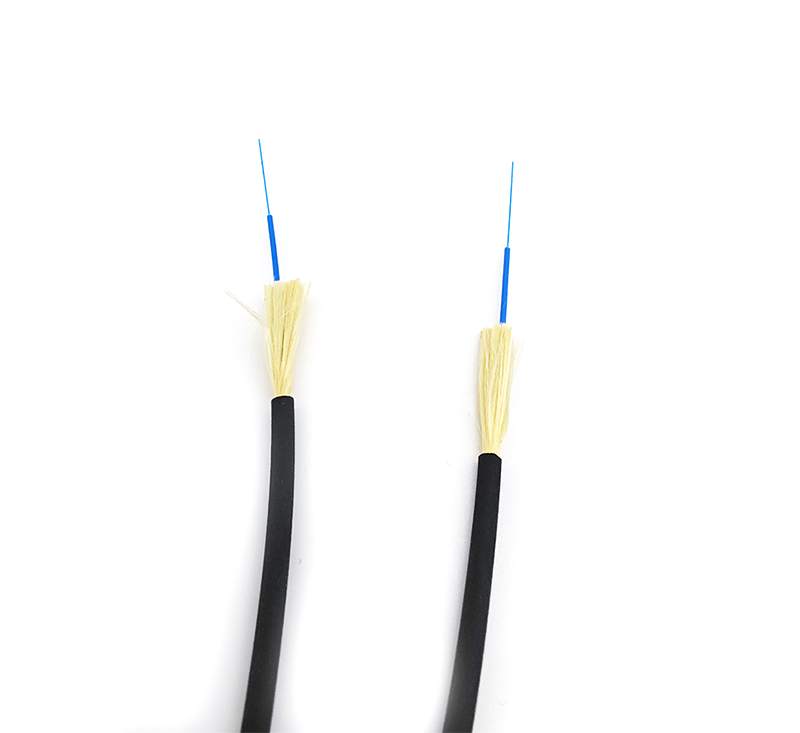Optical fiber cable is manufactured to meet optical, mechanical or environmental performance specifications, it is a communication using one or more optical fibers placed in a sheath as the transmission medium and can be used individually or in groups cable assembly. Optical cables are mainly composed of optical fibers (glass filaments as thin as hair), plastic protective sleeves and plastic sheaths. There are no metals such as gold, silver, copper and aluminum in the optical cables, and generally have no recycling value. Optical fiber cable is a kind of communication line in which a certain number of optical fibers form a cable core according to a certain method, which is covered with a sheath, and some are also covered with an outer sheath to realize optical signal transmission. That is: a cable formed by an optical fiber (optical transmission carrier) through a certain process. The basic structure of optical cable is generally composed of cable core, reinforcing steel wire, filler and sheath, etc. In addition, there are waterproof layer, buffer layer, insulated metal wire and other components as needed.

Special optical cable special purpose
1. Ribbon cable
It is an optical cable that is processed by a plurality of single optical fibers through coloring, stacking into ribbons and secondary sheathing of optical fiber ribbons as a unit. There are two types of optical fibers, namely the encapsulated type and the edge-bonded type, the former can withstand lateral pressure, and the latter has a thinner thickness. Each band can have 4, 8, 12 or 16 fibers. The fiber spacing in the band is 0.28mm (for 4, 8) and 0.3mm (for 12 and 16), neatly arranged, with flatness in the vertical direction, that is, the deviation requirement, which should not be greater than 30, 40, 50um (depending on the in-band) (depending on the number of optical fibers) to facilitate cluster (fusion) splicing. The in-band optical fiber uses the chromatogram in an orderly manner, which is convenient for identification during maintenance and connection. The optical fiber ribbon is small in size, which can improve the packing density of optical fibers in the optical cable, and can form a large number of cores, such as 320 to 3456 cores. It is suitable for the current rapidly developing optical fiber access network.
2. All-dielectric self-supporting optical cable
Abbreviated as ADSS (=All Dielectric self-support) optical cable, the reinforcing element for tension resistance is not metal but aramid yarn and glass fiber reinforced plastic (FRP). Mainly used in strong electric occasions, such as electric power and railway communication systems; at the same time, in large-span occasions such as crossing rivers or complex terrain. ADSS fiber optic cable can be constructed without power failure, track resistance, and wide temperature range.
3. Ground wire composite optical cable
OPGW (=Optical Power Grounded Waveguide) for short, also known as optical fiber overhead ground wire, the ground wire in the power transmission line contains optical fiber units for communication. This kind of optical cable achieves both, that is, the electrical properties and mechanical properties of the ground wire are not damaged due to the installation of optical fibers, and the optical fiber units are also properly protected from damage. There are lead frame type, stainless steel tube type and submarine optical cable type.
4. Submarine cable
Optical cables laid on the seabed have shallow sea and deep sea applications. The characteristics of this optical cable; one is that it can withstand a large hydrostatic pressure (1 ton per 10m deep) and the drag force during the casting process; the other is that it can prevent hydrogen from invading the optical fiber. It has been confirmed that hydrogen will cause the optical fiber to increase the attenuation; the third is the large span of the hop. In submarine cables the fiber optic units are placed in the center of the cable and in a custom stainless steel tube. The tube is surrounded by high-strength arched steel wires. The steel wire layer is covered with copper pipe for remote supply, and it also prevents micro/macro bending when laying the optical cable. The outer sheath is then extruded. It may also be pinned to protect against sharps, including shark bites. Interoceanic submarine optical cables have already landed in Shanghai, Qingdao and Shantou in my country.










